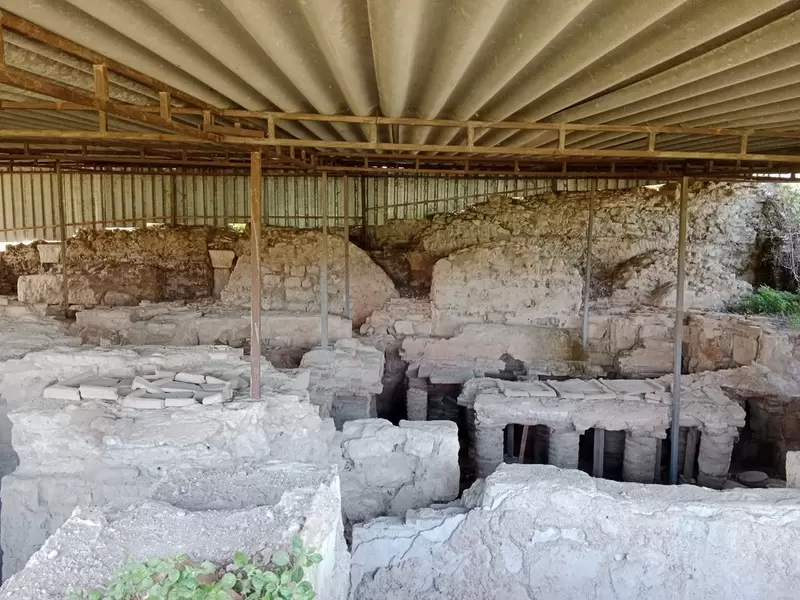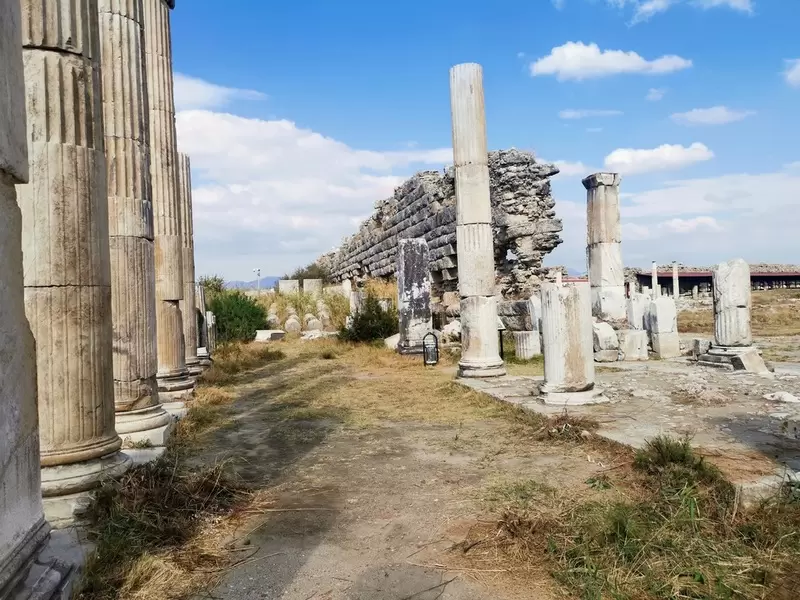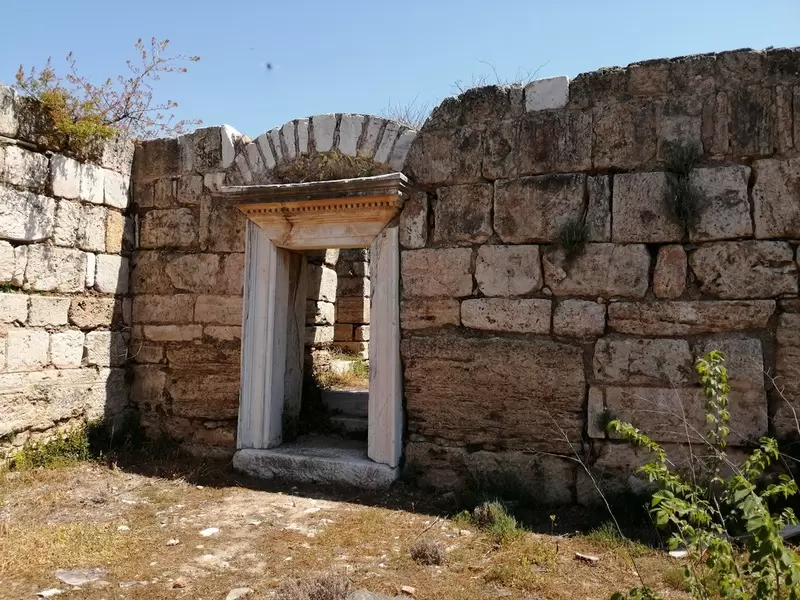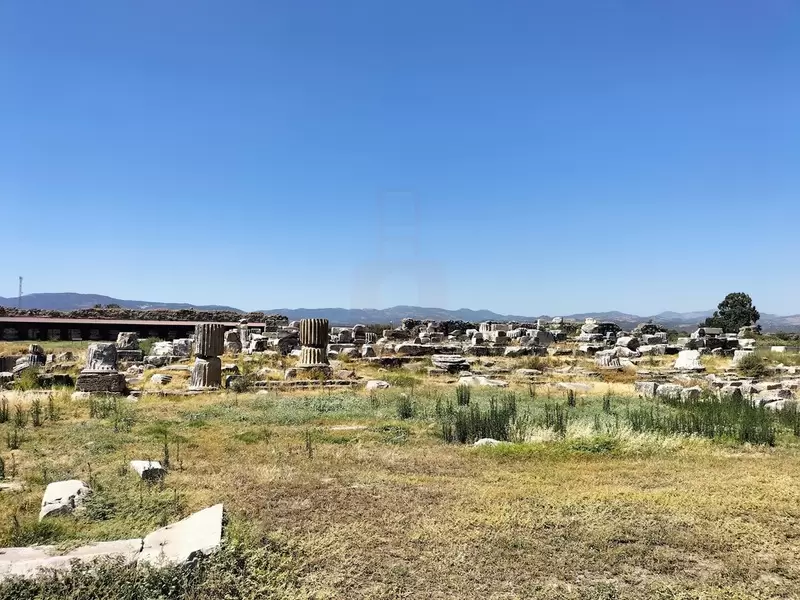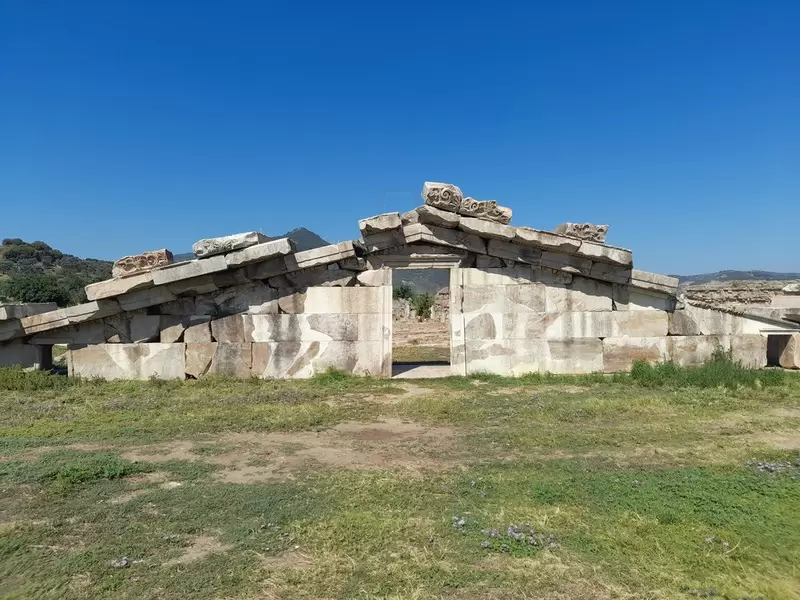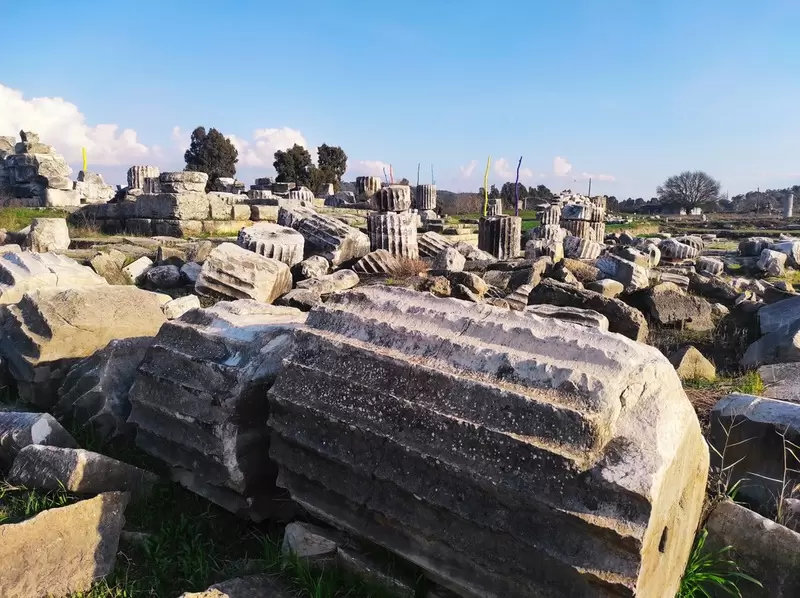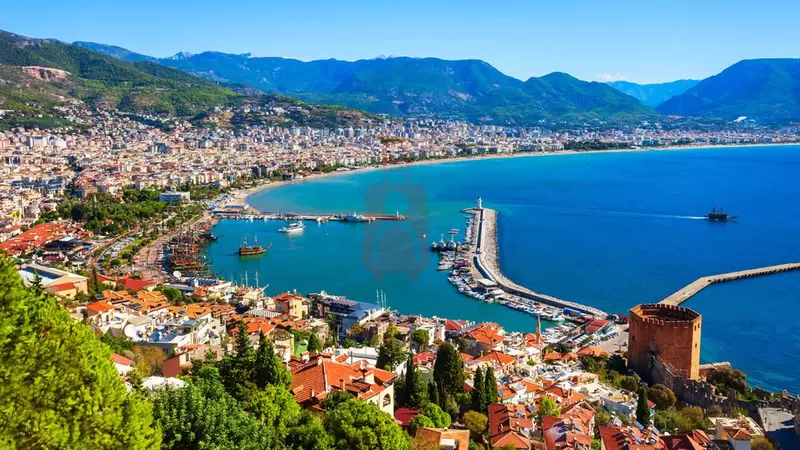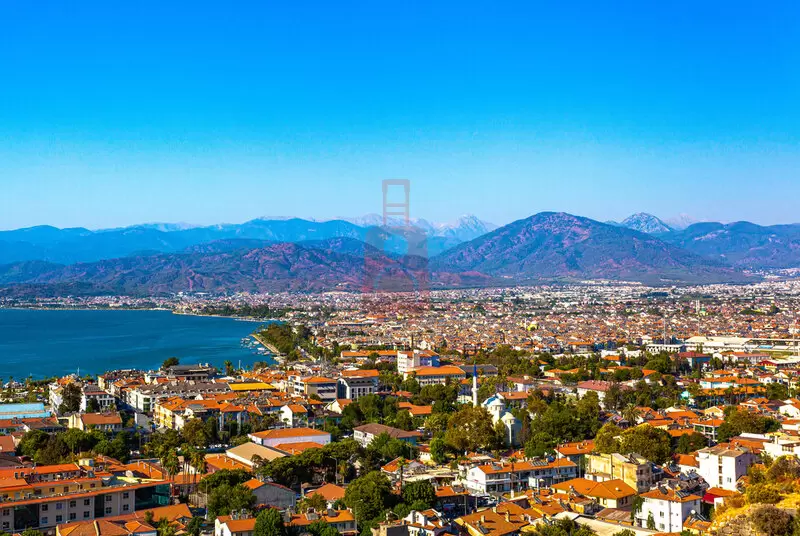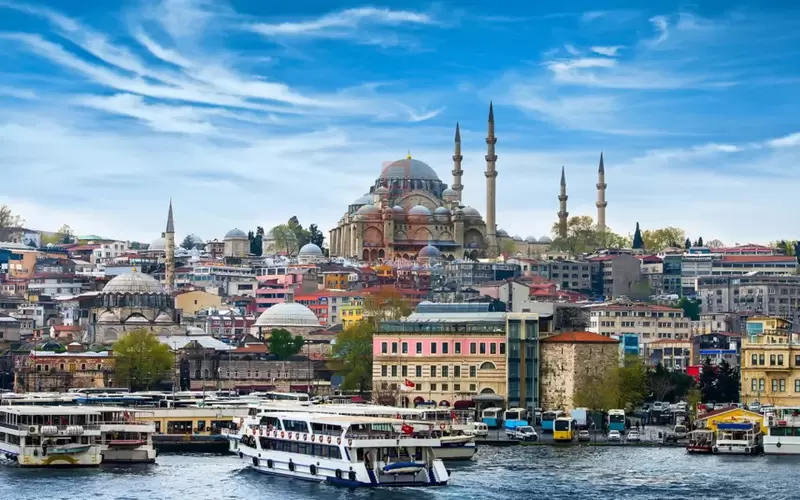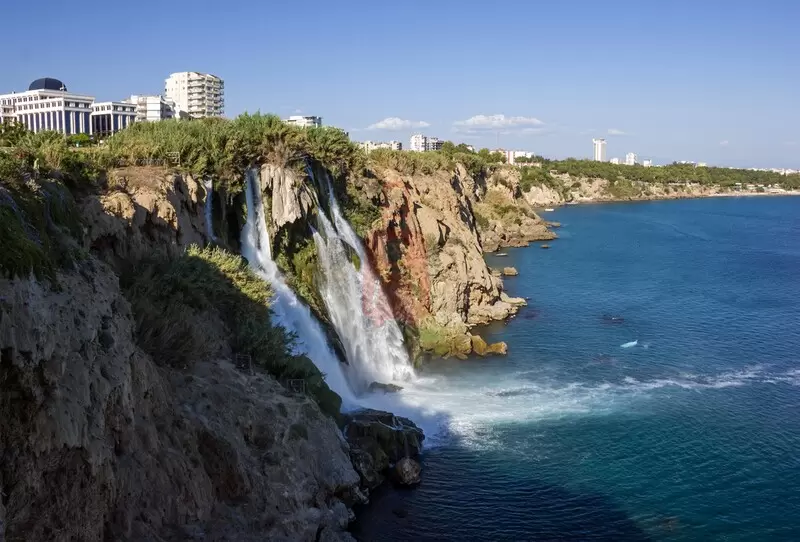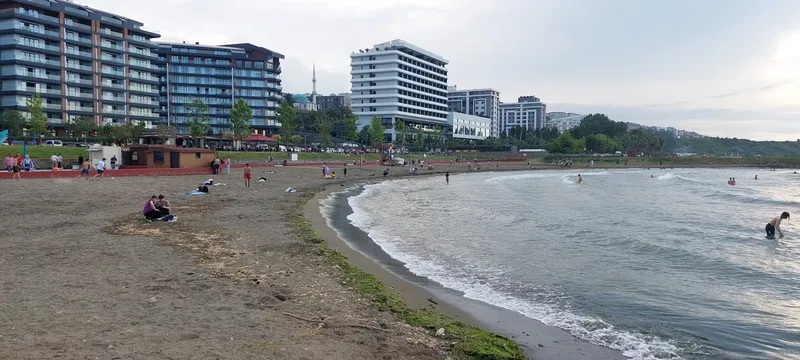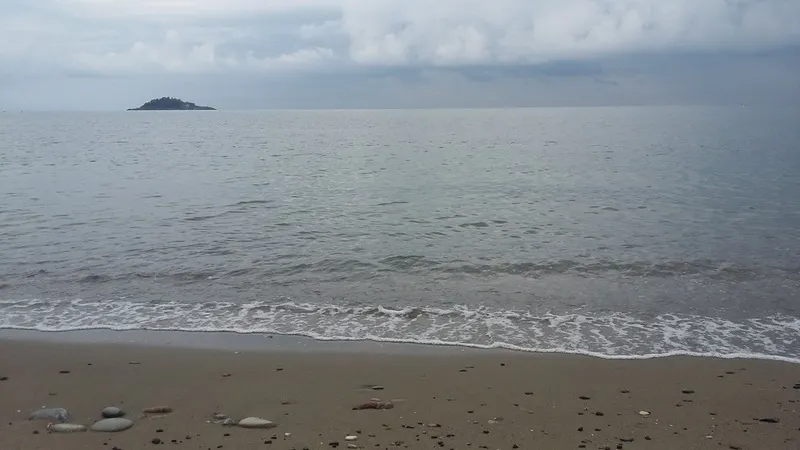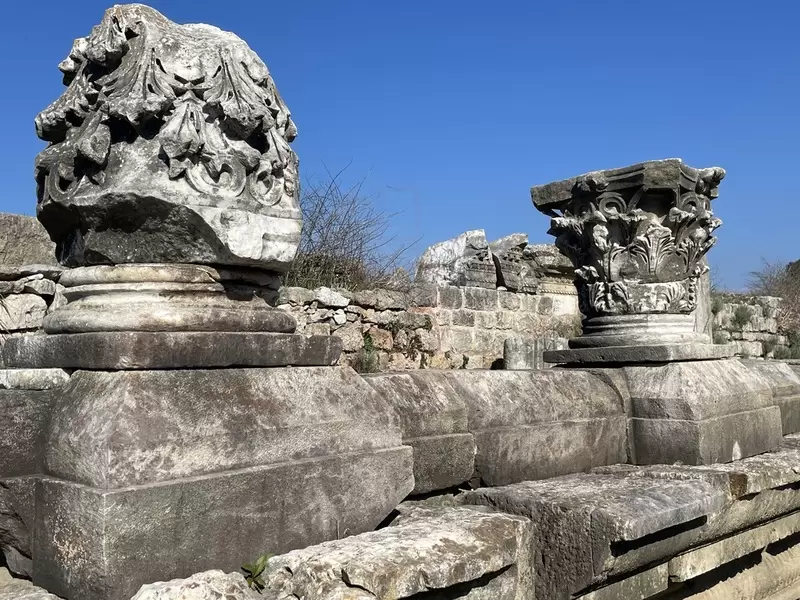
Welcome to Magnesia on the Maeander Ancient City! Nestled in the scenic Maeander River valley of modern-day Turkey, Magnesia offers a captivating journey into the past with its well-preserved ruins and historical significance. Magnesia on the Maeander is an ancient city located in the Aydın Province of Turkey. It is situated near the modern town of Germencik, approximately 20 kilometers northeast of the city of Aydın. With its strategic location, impressive architectural remains, and rich history, Magnesia on the Maeander is a must-visit destination for history enthusiasts and travelers seeking to explore the wonders of antiquity.
To reach Magnesia on the Maeander, you can fly into either İzmir Adnan Menderes Airport or Bodrum Milas Airport, both of which serve domestic and international flights. From İzmir or Bodrum, you can hire a car or take a taxi to reach the ancient city. Magnesia on the Maeander is easily accessible by road, and there are signs directing visitors to the archaeological site.
Historical Background:
Magnesia on the Maeander, also known simply as Magnesia, was an ancient Greek city located in the region of Ionia. The city was founded in the 4th century BCE and flourished under the Hellenistic and Roman periods. Magnesia served as an important cultural and commercial center, known for its wealth, intellectual pursuits, and architectural achievements.
Historical Significance:
Magnesia on the Maeander holds historical significance and offers
insights into the ancient world. Some notable aspects of the city
include:
-
Architecture and Urban Planning: The ruins of Magnesia on the Maeander display impressive examples of ancient Greek and Roman architecture. Visitors can explore the well-preserved theater, which is renowned for its acoustics, as well as the gymnasium, agora, and other public buildings. The city's urban planning and architectural features provide a glimpse into its ancient splendor.
-
Cultural and Religious Sites: The city was known for its cultural and religious life. It housed various temples dedicated to Greek and Roman gods, including the Temple of Artemis Leucophryene, which was one of the Seven Wonders of the Ancient World. These religious sites were important centers of worship and attracted pilgrims from far and wide.
-
Historical Events: Magnesia on the Maeander witnessed several significant historical events. It was the site of the Battle of Magnesia in 190 BCE, where the Roman Republic defeated the Seleucid Empire, solidifying Roman influence in the region. The city also played a role in the Roman Empire's expansion and cultural assimilation.
Archaeological Highlights:
Exploring Magnesia on the Maeander Ancient City allows visitors to discover several remarkable archaeological highlights that showcase its historical significance:
1. Theater: The ancient theater of Magnesia is one of the city's most impressive features. Built on the natural slope of the hillside, this well-preserved theater could accommodate thousands of spectators. Its intricate architectural design and excellent acoustics are a testament to the skill and craftsmanship of the ancient builders.
2. Temple of Artemis Leucophryene: Magnesia was home to the renowned Temple of Artemis Leucophryene, one of the largest and most important sanctuaries dedicated to the goddess Artemis. Although the temple is now mostly in ruins, its remains offer glimpses into the grandeur and religious significance of the site.
3. Agora: The ancient city's central marketplace, known as the Agora, was a hub of commercial and social activity. Visitors can explore the ruins of this bustling marketplace, which was surrounded by colonnaded walkways, shops, and public buildings. The Agora provides insights into the daily life and economic activities of the ancient inhabitants.
4. Gymnasium and Stadium: Magnesia boasted a well-developed infrastructure for physical and intellectual pursuits. The city had a gymnasium and a stadium where sporting events and intellectual gatherings took place. These structures, though partially ruined, offer a glimpse into the city's focus on physical fitness and intellectual pursuits.
Visiting Magnesia on the Maeander Ancient City:
Visiting Magnesia on the Maeander allows you to explore the
archaeological remains of an ancient city and immerse yourself in its
historical significance.
When you visit Magnesia on the Maeander, you can wander through the ruins, marveling at the well-preserved structures and architectural elements. Explore the theater, gymnasium, agora, and other remnants, envisioning the vibrant life that once thrived within the city walls.
It's advisable to wear comfortable shoes suitable for walking on uneven terrain, as the site may have gravel or rocky paths. Don't forget to bring sun protection, as the site may be exposed to sunlight.
While in the Aydın Province, you can also explore other nearby attractions. Aydın is a historical city with notable landmarks, including the ancient city of Aphrodisias and the Temple of Apollo in Didim. The region also offers beautiful coastal areas, such as the popular resort town of Kuşadası.
Visiting Magnesia on the Maeander Ancient City in the Aydın Province offers a unique opportunity to connect with the ancient past and appreciate the architectural and cultural heritage of this once-thriving city. You can gain insights into the ancient Greek and Roman civilizations and the historical events that shaped the region.
Visiting Tips:
- Magnesia on the Maeander Ancient City is located in modern-day Turkey. It is advisable to research and plan your visit in advance, as the site may have specific visiting hours and access restrictions.
- Wear comfortable shoes suitable for walking on uneven terrain, as the ancient city may have rocky pathways and ruins to explore.
- Consider bringing water, snacks, and sun protection, as amenities may be limited in the vicinity.
Nearby Attractions:
While visiting Magnesia, you can also explore other attractions and points of interest in the region:
- Priene: Located nearby, the ancient city of Priene offers an impressive array of ruins, including a well-preserved theater, a temple dedicated to Athena, and an ancient marketplace. Priene's strategic hilltop location provides breathtaking views of the surrounding landscape.
- Ephesus: Situated a short distance away, Ephesus is a renowned ancient city famous for its grand library, impressive amphitheater, and well-preserved Roman ruins. A visit to Ephesus offers a deeper understanding of the ancient Roman way of life.
In conclusion, a visit to Magnesia on the Maeander Ancient City allows you to step back in time and immerse yourself in the historical and cultural heritage of the region. Explore the well-preserved ruins, envision the bustling marketplace, and appreciate the architectural wonders of this ancient city.
Please note that archaeological sites can vary in terms of accessibility, facilities, and ongoing restoration or excavation work. It's advisable to check for the latest information and guidelines from official sources before planning your visit to Magnesia on the Maeander Ancient City.
